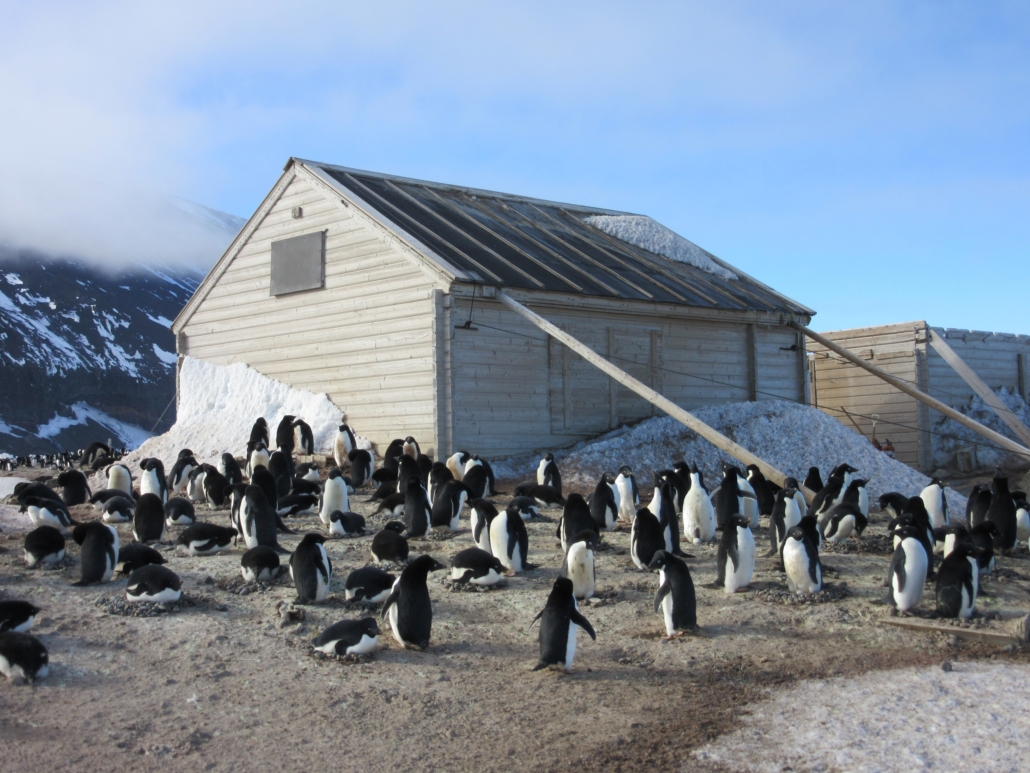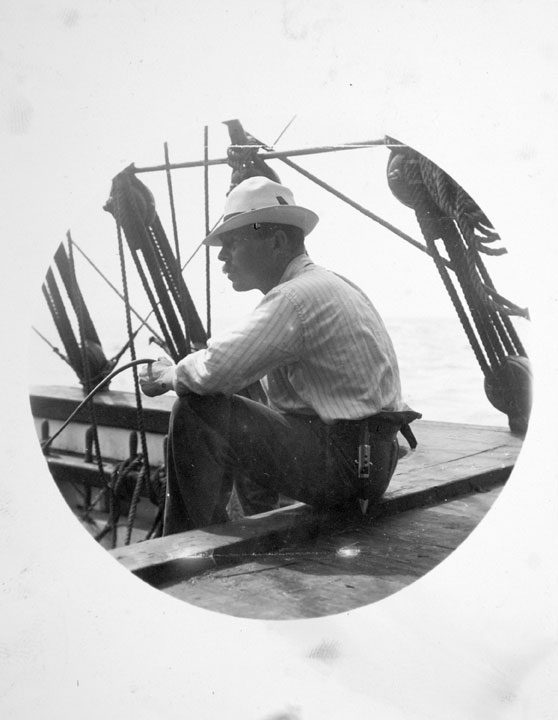Breaking the Ice, which opened on 18 May, tells the story of the British Antarctic Expedition, which sailed from London on the Southern Cross, landing at Cape Adare in January 1899. The expedition, led by Carsten Borchgrevink, recorded a number of Antarctic firsts. The explorers were the first people to spend a winter on the Antarctic continent, they erected the first buildings, took the first steps on the Ross Ice Shelf, were the first to use dogs and a Primus stove on the continent, and recorded the first full year of climate data. Zoologist Nicolai Hanson was the first person to die and be buried in Antarctica.
Borchgrevink and his party inhabited Cape Adare – an area now famous for its harsh weather and as the site of the world’s largest Adelie Penguin colony – from 1899-1900. Although the expedition sailed under the Union Jack, most of the crew were Norwegian.
The explorers built two huts at Cape Adare, using kitsets designed in Norway, which were also used in 1911 by the Northern Party of Robert Falcon Scott’s Terra Nova expedition.
Antarctic Heritage Trust Executive Director Nigel Watson expects enormous interest in the exhibition and says these huts are the only example left of humanity’s first dwelling on any continent, which makes them of historic significance for the world.
“It’s a very rare opportunity to exhibit these artefacts and through sharing their stories, give people a glimpse into early Antarctic exploration and what these men endured in the first year on the Antarctic continent,” says Nigel.
“We were thrilled by the global interest in the fruitcake and the Treecreeper painting … literally millions of people saw those stories online. People are fascinated by these expeditions, the provisions they left behind and how the Trust is able to conserve them. I am confident this exhibition will be popular as it is the only chance for people to see these objects.”
Museum Director Anthony Wright says Canterbury Museum has one of the world’s most significant collections from the heroic age of Antarctic exploration and discovery – almost 7,000 objects.
“We are delighted that we’ve been able to work with the Trust in developing this exhibition so that this unique Antarctic collection can be seen by as many people as possible. This really is a once in a lifetime opportunity and we hope that Cantabrians and visitors to the city will take time to see the exhibition.”
The expedition was plagued with difficulties and controversy. As well as Hanson’s death, one of the huts caught fire and there were ongoing tensions between the explorers. On their return, their achievements in science and exploration were mostly ignored by the British establishment.
However, the expedition’s experience informed future trips to Antarctica and paved the way for the expeditions of Robert Falcon Scott, Roald Amundsen, Ernest Shackleton and others.
Breaking the Ice, the story of the first year in Antarctica (1899–1900), opened at Canterbury Museum on 18 May and runs to 13 October 2019.



